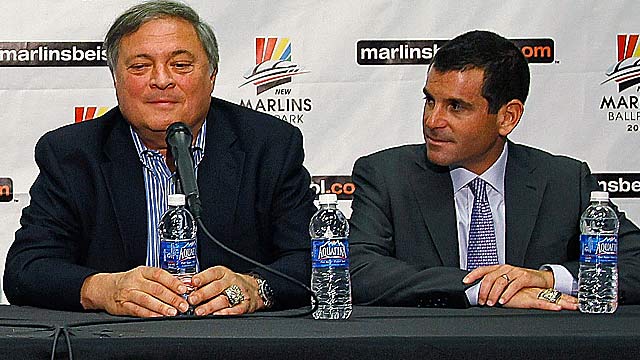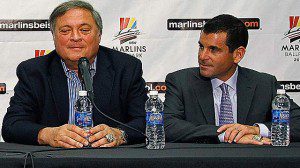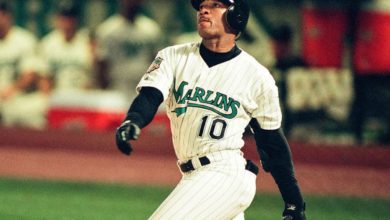

In addition to being a sports fan, a baseball fan and a Miami Marlins fan, I spend my non-fan time as a strategic marketing consultant. And what the Marlins did yesterday – regardless of where you fall on the like-hate spectrum regarding Jeffrey Loria – was unthinkable when it comes to brand building.
Just 368 days ago, the old Florida Marlins became the new Miami Marlins with new colors and new uniforms during a celebration at their soon-to-be-completed new ballpark. Just weeks later, they went all-in with an unheard of spending frenzy and signed three big-name, yet not necessarily game-changing, players in Jose Reyes, Mark Buehrle and Heath Bell.
Team owner Loria and president David Samson went out of their way to present the transformation as a clear indicator the new Marlins brand was leaving the old one behind and everything that went along with it – including miserly payrolls.
New manager, new brand, new players, new era. Everything looked perfect heading into spring training, right?
Wrong.
Whether or not you were happy with the arrival of Ozzie Guillen, Reyes, Buehrle and Bell, you were told it was a new beginning. Out with the old and in with the new, right? But brands aren’t just about glossy promotions or advertising campaigns or press-conference promises.
Branding is built from within. Branding is about culture. And while the Marlins changed their logo and the product on the field, management’s underlying culture never changed. The Marlins always have been and always will be about managing profits as long as Loria is the owner.
Last year’s glitz-filled offseason was an impressive splash for outsiders looking in, but good branding isn’t about shiny metal objects. Quality branding begins with the story behind the brand. Unfortunately, the story behind the Marlins brand is not a good one from a fan POV. Loria and Samson have shown time and again current profit is their only business driver. If winning and profits happen to coincide, fantastic, but the driver is profit. That’s why the Montreal Expos are no more, that’s why the Marlins books were investigated a few seasons ago, and that’s why the Marlins manipulated Miami-Dade politicians and taxpayers to foot the bill for the new stadium. Mo’ money, mo’ money, mo’ money.
The number-one indicator the new Marlins were still the old Marlins was their reluctance to waive no-trade clauses during last winter’s spending spree. Why were the Marlins so steadfast in this policy? It was a safety valve in the event their plan failed. Yes, that’s right: They anticipated a salary dump if the wins and profits weren’t there. They hedged their bets. While I believe their intentions were good – remember who we’re talking about here, Loria and Samson have huge egos – they were outside their comfort zone in chasing W’s through free agency.
The only successful outcome would have been if the Marlins were in playoff contention through the final weekend of the season. Fans would have shown up to the very end, and the ringing cash register would have been music to Loria’s ears. If the Marlins finished in second in the NL East, but never really contended for a postseason spot, Marlins Park still would have suffered at the turnstiles. And that would have led to a similar outcome: The spending experiment didn’t work — get my money back.
While this makes good fiscal sense, it doesn’t take into consideration the bill of goods sold to fans in the form of a taxpayer-funded stadium and the promise of leaving the past behind. The truth is the Marlins paid an awful lot of money for a horrible result. And fans should be outraged by the poor performance on the field as much as management was at the poor attendance. As the Oakland A’s proved, you don’t need a big payroll to be a winner. That’s where the Marlins erred — they deviated from their culture by promising a new era had dawned in an effort to sell tickets. While I’m bothered by the false brand promotion, I’m less bothered by what happened yesterday because the on-field product was awful.
The Marlins sold their brand as the beginning of something new, when the reality was profit was all that mattered. Bottom line: They lied to season ticket holders, sponsors and fans by convincing them the brand had changed. And, really, Marlins fans and baseball experts, does this surprise you? If so, in addition to being a shrewd profit monger, Loria is a pretty good snake oil salesman, too. But we already knew that. And we fell for it anyway. Shame on the Marlins for duping us yet again with some overreaching hype, and shame on us for believing a leopard had changed its spots.





